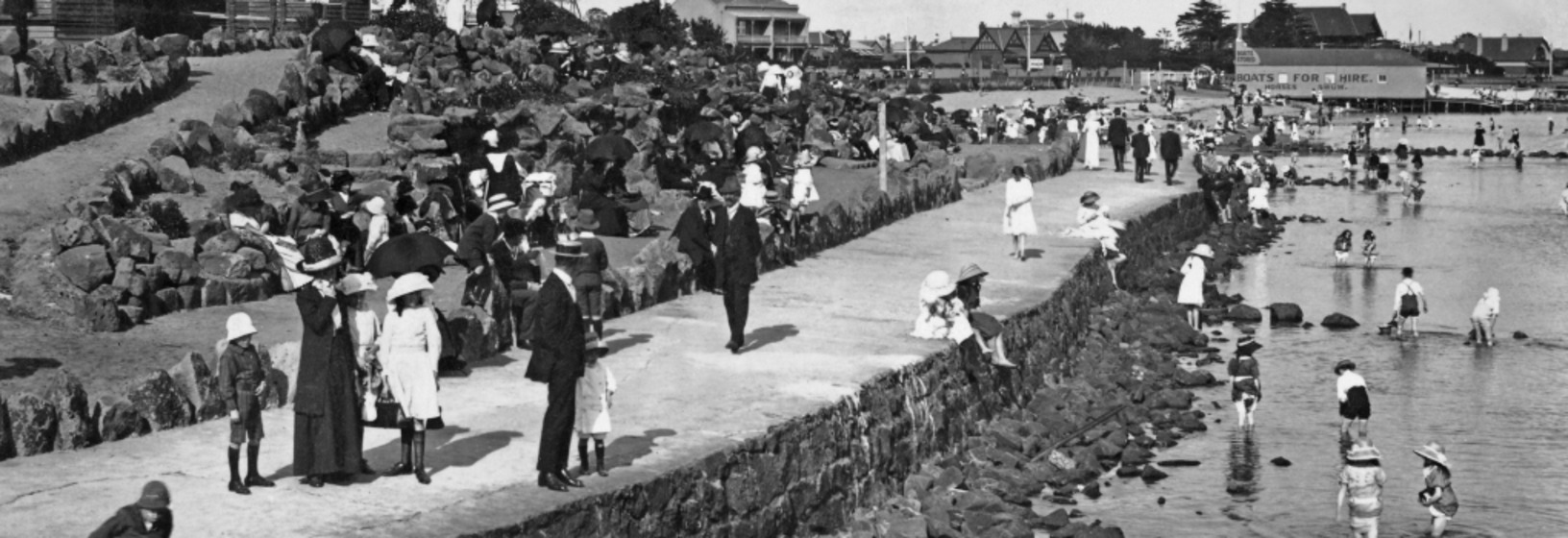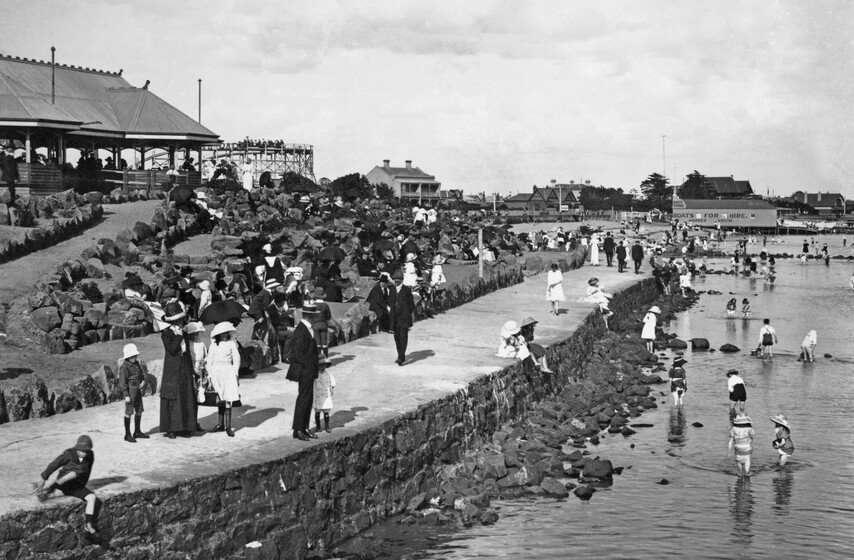As early as 1895, under Carlo Catani’s purview, a St Kilda Marina Reserve was already being mapped out while the local mudflats were transformed into the wonderful coastal gardens that he designed.
The 1890s built on previous reclamation works along the St Kilda foreshore and would see a sea wall built out of rubble between St Kilda Pier and Captain Kenny’s Bathing Ship. These works allowed for the creation of the Pier Lawns around the St Kilda Yacht Club by 1896. In 1899, a bluestone wall was set to further extend to Cowderoy Street, completed around 1906.
The St Kilda Fore Shore Committee, of which Catani was an inaugural member, was established in 1906 and it oversaw on-going reclamation works and the commissioning of the gardens. Catani not only volunteered his time and professional expertise to Committee works but when the St. Kilda Fore Shore Committee funds dried up, he ensured the workers’ wages were paid with a loan of £1,400 out of his own pocket.
From the start, these gardens and the St Kilda foreshore became a playground for Victorians. Initially there was Baxter’s Merry-Go-Round across the Esplanade, with a host of other entertainment venues. The English Pierrots were to perform in a roped off section of the Pier Lawns from 1905, with a fenced enclosure and stage pavilion to follow, where a piano would be wheeled across the road from the Esplanade Hotel. Dreamworld was to be opened by Premier Thomas Bent in 1906; eventually flounder and was to be replaced by Luna Park in 1912, with the subsequent additions of Little Luna Park, and the Palais de Danse in 1913.
In December 1914, a statue of Captain Cook was unveiled, and the gardens were renamed Captain Cook’s Lawn. The Captain Cook statue was moved from its original location in 1988 to allow for the construction of the Bicentennial Rotunda.
The St Kilda foreshore reclamation was Catani’s last major work that spanned from 1890 to 1916. The Gardens were named in his honour in October 1927, in recognition of this contribution. Catani is deservedly credited with the design, though in his humble manner, he always generously shared praise with the curator of the gardens, George Robert Ashley (1871 - 1952). They worked together from 1906 when the Fore Shore Committee was established. Ashley ensured that after Catani died in 1918, his plans and vision for the foreshore garden were completed.
Photograph caption: This image well captures promenading seasiders, from the elevated entrance to the Tea Pavilion, known as Catani’s Lookout. Luna Park’s Scenic Railway can be seen in the centre background with Brooke’s Boat shed and Pier off to the right. Image enhanced by Paul Caine.
















